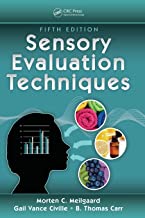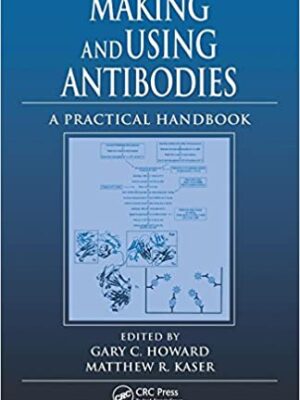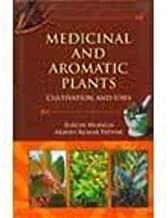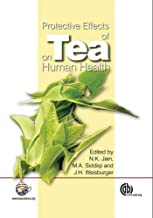Sensory Evaluation Techniques
Original price was: ₹15,078.00.₹12,062.40Current price is: ₹12,062.40.
ISBN: 9781482216905
Author/Editor: Vance
Publisher: CRC Press
Year: 2016
1 in stock (can be backordered)
Description
This new edition of a bestseller covers all phases of performing sensory evaluation studies, from listing the steps involved in a sensory evaluation project to presenting advanced statistical methods. Like its predecessors, Sensory Evaluation Techniques, Fifth Edition gives a clear and concise presentation of practical solutions, accepted methods, standard practices, and some advanced techniques.
The fifth edition is comprehensively reorganized, revised, and updated. Key highlights of this book include:
A more intuitive organization
Statistical methods adapted to suit a more basic consumer methodology
Rearranged material to reflect advances in Internet testing
New time-intensity testing methods
New chapters on advanced sensory processes, quality control testing, advertising claims, and business challenges
New material on mapping and sorting, graph theory, multidimensional scaling, and flash profiling techniques
Explanations of theories of integrity, amplitude, and balance and blend
Updated appendices for spectrum method scales
Updated references
Sensory Evaluation Techniques remains a relevant and flexible resource, providing how-to information for a wide variety of users in industry, government, and academia who need the most current information to conduct effective sensory evaluation and interpretations of results. It also supplies students with the necessary theoretical background in sensory evaluation methods, applications, and interpretations.
Additional information
| Weight | 1.247 kg |
|---|
Product Properties
| Year of Publication | 2016 |
|---|---|
| Table of Contents | Introduction to Sensory Techniques Introduction Development of Sensory Testing Human Subjects as Instruments Conducting a Sensory Study References Sensory Attributes and the Way We Perceive Them Introduction Sensory Attributes Human Senses Perception at Threshold and Above References Controls for Test Room, Products, and Panel Introduction Environmental Controls Product Controls Panelist Controls References Factors Influencing Sensory Verdicts Introduction Physiological Factors Psychological Factors Poor Physical Condition References Measuring Responses Introduction Psychophysical Theory Classification Grading Ranking Scaling References Guidelines for Choice of Technique Introduction Define the Project Objective Define the Test Objective Integrate Project Objective and Test Objectives to Construct Test Design Reference Overall Difference Tests: Does a Sensory Difference Exist between Samples? Introduction Unified Approach to Difference and Similarity Testing Triangle Test Duo-Trio Test Two-out-of-Five Test Same/Different Test (or Simple Difference Test) "A"-"Not A" Test Difference-from-Control Test Sequential Tests References Attribute Difference Tests: How Does Attribute X Differ between Samples? Introduction: Paired Comparison Designs Directional Difference Test: Comparing Two Samples Specified Method of Tetrads: Comparing Two Samples on a Specified Attribute Using the Method of Tetrads Pairwise Ranking Test: Friedman Analysis--Comparing Several Samples in All Possible Pairs Introduction: Multisample Difference Tests-Block Designs Simple Ranking Test: Friedman Analysis: Randomized (Complete) Block Design Multisample Difference Test: Rating Approach-Evaluation by Analysis of Variance (ANOVA) Multisample Difference Test: BIB Ranking Test (Balanced Incomplete Block Design)-Friedman Analysis Multisample Difference Test: BIB Rating Test-Evaluation by Analysis of Variance References Determining Threshold Introduction Definitions Applications of Threshold Determinations References Selection and Training of Panel Members Introduction Panel Development Selection and Training for Difference Tests Selection and Training of Panelists for Descriptive Testing Panel Performance and Motivation Appendix 10.1 Prescreening Questionnaires Appendix 10.2 Panel Leadership Advice References Descriptive Analysis Techniques Definition Field of Application Components of Descriptive Analysis Commonly Used Descriptive Test Methods with Trained Panels Commonly Used Descriptive Test Methods with Untrained Panels Application of Descriptive Analysis Panel Data References Spectrum (TM) Descriptive Analysis Method Design of the Spectrum Descriptive Method Myths About the Spectrum Descriptive Analysis Method Terminology and Lexicon Development Intensity Combining the Spectrum Descriptive Analysis Method with Other Measures Spectrum Descriptive Procedures for Quality Assurance, Shelf-Life Studies and So On References Appendix 12.1 Spectrum Terminology for Descriptive Analysis Appendix 12.2 Spectrum Intensity Scales for Descriptive Analysis Appendix 12.3 Streamlined Approach to Spectrum References Appendix 12.4 Spectrum Descriptive Analysis: Product Lexicons Appendix 12.5 Spectrum Descriptive Analysis: Examples of Full Product Descriptions Appendix 12.6 Spectrum Descriptive Analysis Training Exercises References Affective Tests: Consumer Tests and In-House Panel Acceptance Tests Purpose and Applications The Subjects/Consumers in Affective Tests Choice of Test Location Affective Methods: Qualitative Affective Methods: Quantitative Internet Research Using Other Sensory Methods to Uncover Insights Appendix 13.1 Screeners for Consumer Studies-Focus Group, CLT, and Home Use Test (HUT) Appendix 13.2 Discussion Guide-Group or One-on-One Interviews Appendix 13.3 Questionnaires for Consumer Studies Appendix 13.4 Protocol Design for Consumer Studies References Basic Statistical Methods Introduction Summarizing Sensory Data Statistical Hypothesis Testing Thurstonian Scaling Statistical Design of Sensory Panel Studies Appendix 14.1 Probability References Advanced Statistical Methods Introduction Data Relationships Preference Mapping Treatment Structure of an Experimental Design References Guidelines for Reporting Results Introduction Anatomy of the Report Graphical Presentation of Data Example Reports (Tables 16.2 through 16.4) References Sensory Evaluation in Quality Control (QC/Sensory) Introduction Attribute Descriptive Methods Difference-from-Control Methods In-Out Method References Advanced Consumer Research Techniques Introduction Front End of Innovation Sequence Mapping Capturing the Iconic Experience Consumer Cocreation Qualitative Use of Kano Methodology Benefit Perception beyond Liking: Functional, Emotional, and Health and Wellness Benefits Behavioral Economics Category Appraisals, Key Drivers Studies and Sensory Segmentation Ad Claims Additional Resources References Statistical Tables Practical Sensory Problems Scenario 1 Scenario 2 Scenario 3 Scenario 4 Scenario 5 References Additional Qualitative References |
| Author | Vance |
| ISBN/ISSN | 9781482216905 |
| Binding | Hardback |
| Edition | 5 |
| Publisher | CRC Press |
You must be logged in to post a review.






Reviews
There are no reviews yet.